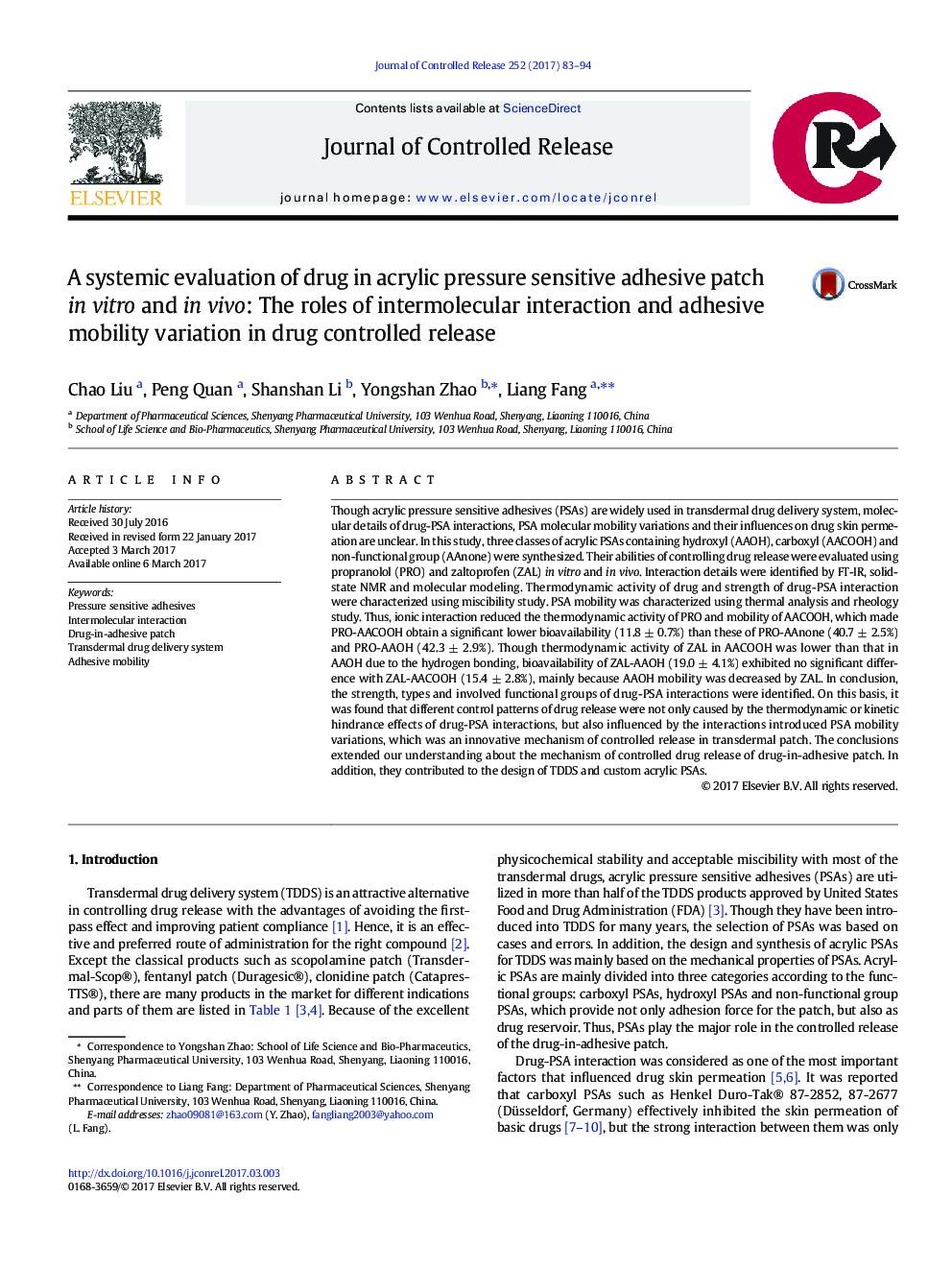| کد مقاله | کد نشریه | سال انتشار | مقاله انگلیسی | نسخه تمام متن |
|---|---|---|---|---|
| 5433810 | 1508998 | 2017 | 12 صفحه PDF | دانلود رایگان |

Though acrylic pressure sensitive adhesives (PSAs) are widely used in transdermal drug delivery system, molecular details of drug-PSA interactions, PSA molecular mobility variations and their influences on drug skin permeation are unclear. In this study, three classes of acrylic PSAs containing hydroxyl (AAOH), carboxyl (AACOOH) and non-functional group (AAnone) were synthesized. Their abilities of controlling drug release were evaluated using propranolol (PRO) and zaltoprofen (ZAL) in vitro and in vivo. Interaction details were identified by FT-IR, solid-state NMR and molecular modeling. Thermodynamic activity of drug and strength of drug-PSA interaction were characterized using miscibility study. PSA mobility was characterized using thermal analysis and rheology study. Thus, ionic interaction reduced the thermodynamic activity of PRO and mobility of AACOOH, which made PRO-AACOOH obtain a significant lower bioavailability (11.8 ± 0.7%) than these of PRO-AAnone (40.7 ± 2.5%) and PRO-AAOH (42.3 ± 2.9%). Though thermodynamic activity of ZAL in AACOOH was lower than that in AAOH due to the hydrogen bonding, bioavailability of ZAL-AAOH (19.0 ± 4.1%) exhibited no significant difference with ZAL-AACOOH (15.4 ± 2.8%), mainly because AAOH mobility was decreased by ZAL. In conclusion, the strength, types and involved functional groups of drug-PSA interactions were identified. On this basis, it was found that different control patterns of drug release were not only caused by the thermodynamic or kinetic hindrance effects of drug-PSA interactions, but also influenced by the interactions introduced PSA mobility variations, which was an innovative mechanism of controlled release in transdermal patch. The conclusions extended our understanding about the mechanism of controlled drug release of drug-in-adhesive patch. In addition, they contributed to the design of TDDS and custom acrylic PSAs.
238
Journal: Journal of Controlled Release - Volume 252, 28 April 2017, Pages 83-94